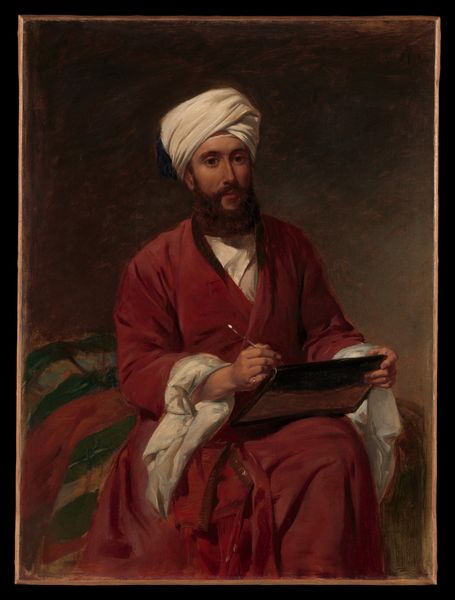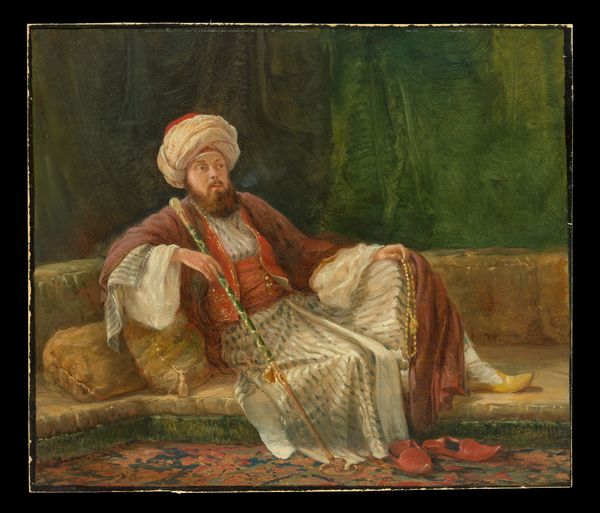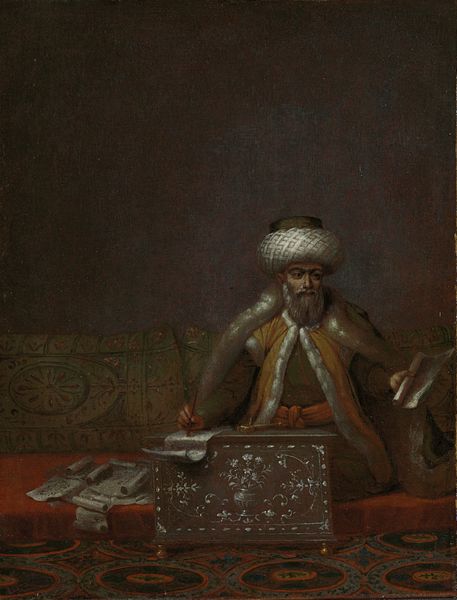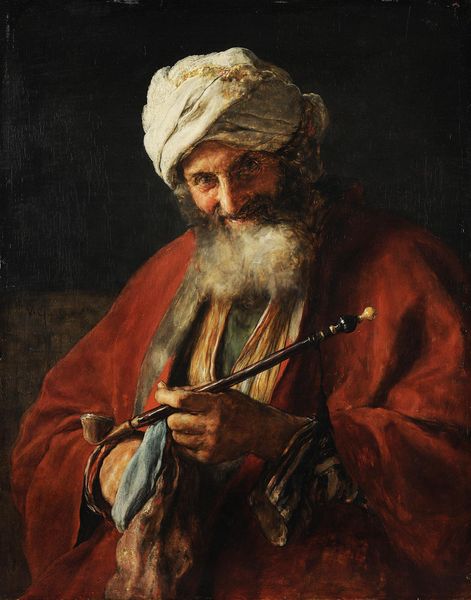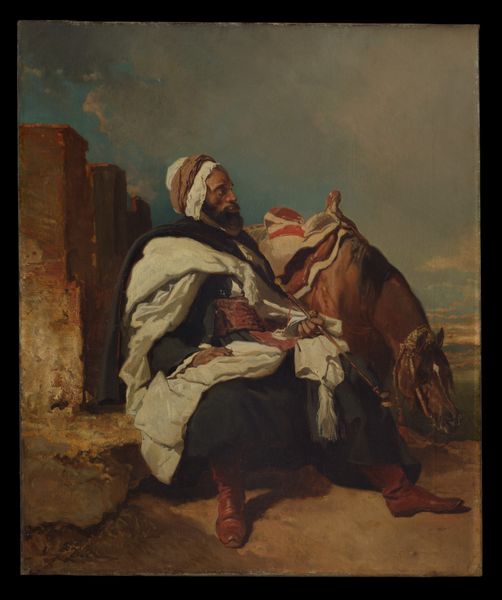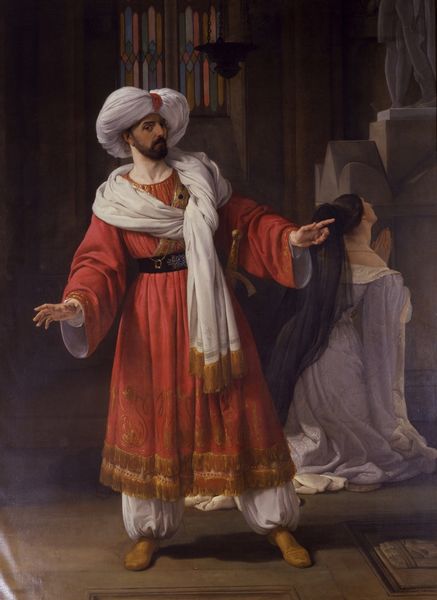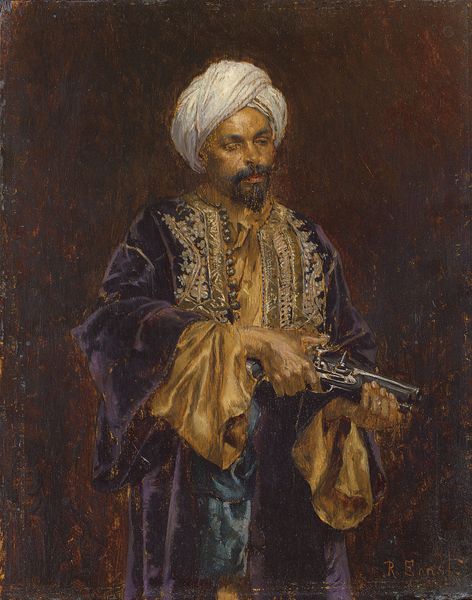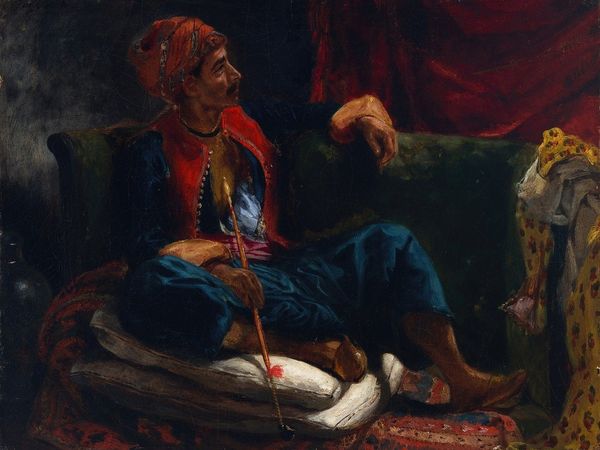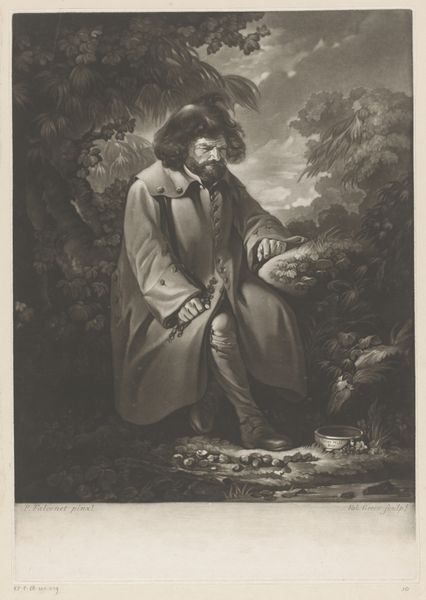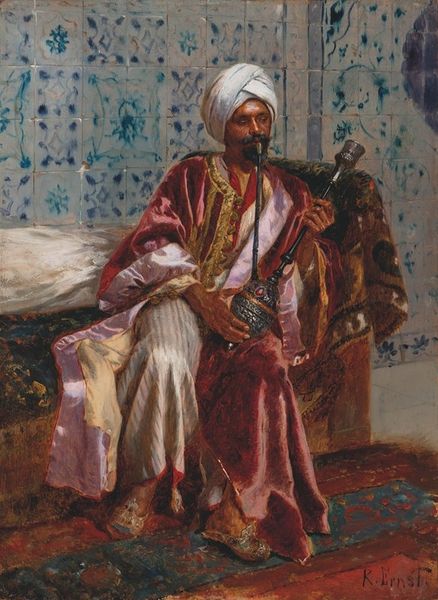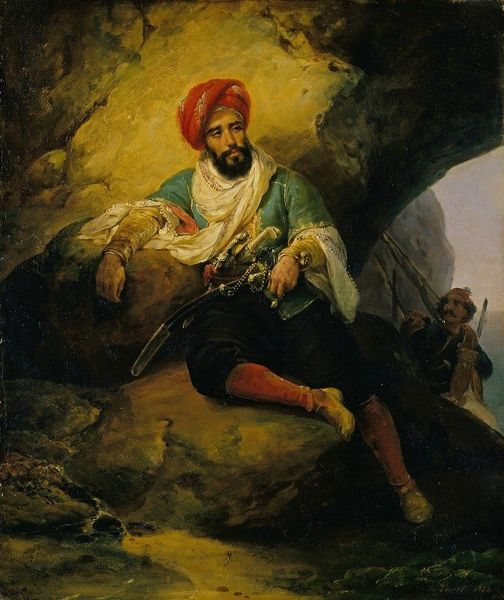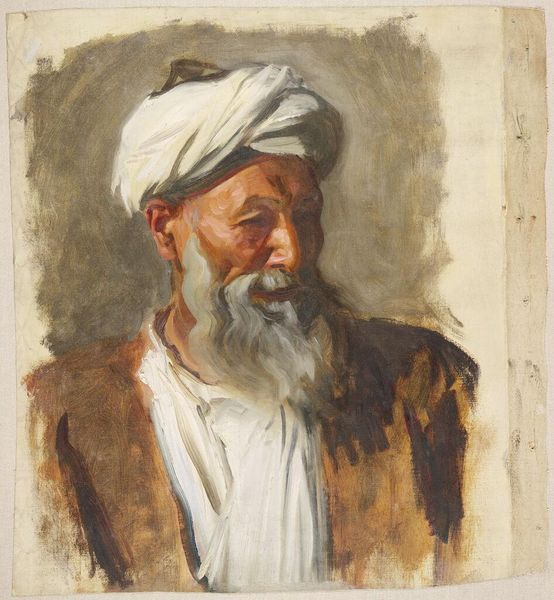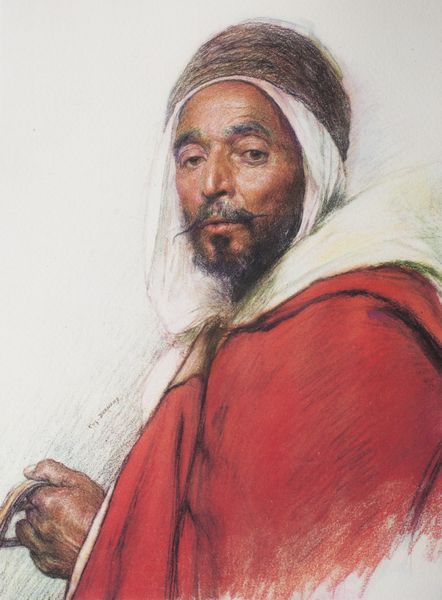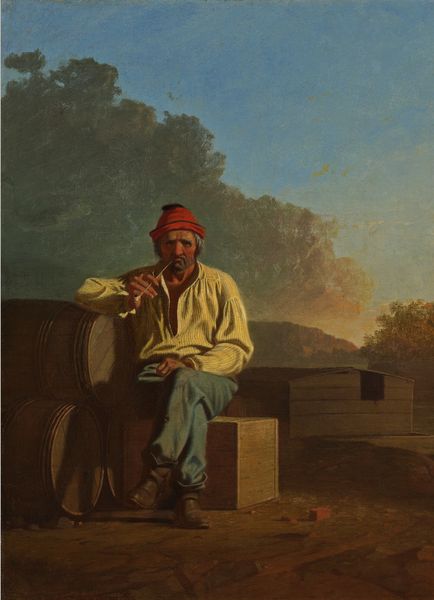
painting, oil-paint
#
portrait
#
painting
#
oil-paint
#
romanticism
#
orientalism
#
history-painting
Dimensions: 13 3/4 x 10 1/2 in. (34.9 x 26.7 cm)
Copyright: Public Domain
Curator: At the Metropolitan Museum of Art, we’re looking at “The Arab Sage,” an oil painting dating back to the 19th century. It certainly evokes a mood. What are your initial impressions? Editor: Intensely Romantic, isn’t it? Melancholy, even. There's a chiaroscuro effect that isolates the sage, directing focus straight to the delicate script in his hands and then up to his gaze, heavy with thought. The palette also feels significant, the subdued earth tones highlighting the brightness of his turban. Curator: Absolutely, and notice how the trappings – the turban, the fur, the quill – they aren't just decorative elements. They’re actively constructing a particular image, designed for a European audience steeped in the tropes of Orientalism. The canvas would have been purchased, traded, displayed—the very means by which certain identities become material goods. Editor: Indeed. And let's not disregard the craftsmanship. Observe the detailed rendering of textiles, from the plush fur collar to the textured layers of his red headdress. There is very palpable sense of touch here. It enhances both the sense of place and this figure's tangible reality. Curator: But is it reality or representation? Think about the labor involved in creating those fabrics, perhaps halfway across the world. Who profits from the image this painting projects, and who remains unseen and unheard? This portrait obscures that complex network of production and consumption. Editor: You are correct; it invites necessary inquiry. And I would add the importance of studying how the painter uses light and shadow, specifically to idealize this so-called Arab sage. Notice how, even while holding Western items like paper, pen and glasses, this figure projects nobility, serenity, wisdom. These are the aesthetic building blocks of idealization. Curator: Well, there’s undeniable power in how the composition operates to frame the man, or rather the idea of “the man.” Hopefully, a painting like this reminds us of how constructed these types of portrayals can be. Editor: Yes, reminding us that form and context together unveil art’s deepest purposes. It's about looking closer, yes, but it is more about understanding.
Comments
No comments
Be the first to comment and join the conversation on the ultimate creative platform.
